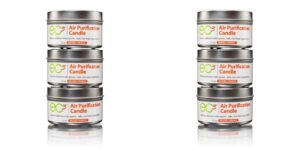When it comes to folding utility knife steel alloys, there are several elements added to the mix, each of which offers unique attributes. Some of these even work in concert, as in the case of carbides, to improve hardness and edge retention.
While there are many with which you might want to become familiar if you were into metallurgy, here are three of the most important ones and what they offer.
Carbon
Discounting iron, which constitutes the vast bulk of steel, carbon is the next most important elemental additive. It is, after all, the thing which makes iron not just iron but steel.
Carbon is added to folding utility knife steels in concentrations that range, usually, from .5% to 1.5%. Any lower and the steel is too soft, any higher and the steel will be too brittle.
As a general rule, the main virtue carbon adds to steel is structural stability and strength. Carbon makes iron harder and stronger than it would be on its own, and by adding carbon, the steel can be given a heat treatment that makes it harder.
Therefore, the main elemental virtue of carbon is that it makes steel harder, so as a general rule, the more carbon there is in an alloy, the longer the steel will hold an edge. The tradeoff is that as carbon increases, so too does the brittleness of an alloy.
Chromium
Chromium is, all things considered, the second most important element added to steel after iron. The main reason chromium is added to steel is to protect it against oxidation – that is, rust and corrosion.
The more chromium a steel alloy contains, the more rust-resistant it will be, and chromium is often present in steel in concentrations ranging from 10% to 15%, sometimes a little more or less.
It is also important to note that not all folding utility knife steels contain chromium; it is added where present to inhibit corrosion. Also, the tradeoff is that chromium makes a steel alloy very soft and weakens its stability as well.
Vanadium
Lastly, we have vanadium, which is a very dense, strong metal that is added to steel to improve its strength. Not all steels have vanadium, but where it is added, it increases the steel’s toughness and wear resistance.
Also, vanadium interacts with carbon to form carbides, hard, crystal like structures that make a steel much harder, albeit slightly more brittle. The main reason for carbide content in steel is to make the steel harder. A steel with a good distribution of vanadium carbides will likely be able to hold an edge for much longer.
Where to Get Your Next Folding Utility Knife
Now that you know a little about folding utility knife steel chemistry, you can more effectively pick out your next carry tool. That’s waiting for you at White Mountain Knives, and they represent some of the best brands. Visit their website and if you have any questions or are looking for something specific, get in touch with them directly.


